July-August 2001
An Elephant I’ll Never Forget
By Sr. Nelida op
A Filipino Dominican Sister works in Kenya. Sr. Nelida tells us of a scary adventure she had with an elephant.

I suppose the scariest moment in my whole life was the time I was driving through the jungle when suddenly a wild elephant appeared before me and began to charge straight at me like a mad dog. And would you believe it, I drove for a full 30 kilometers, backwards, with the elephant chasing me. Every time I stopped for a moment to try and get an easier route, it seemed that the whole world was turning upside down. Luckily, the jeep was faster than the elephant which was chasing me and screaming – yes, elephant do scream. At that moment I thought I would never see the light of another day. But thanks be to God I survived to tell you the story her in Misyon.
Jungle life
But how did I ever get inside the jungle? Well, you see, myself and my two Filipino companions have been working in this interesting, rough and dangerous bush for quite a long time. The Catholic Mission, which is right at the middle of the forest, is 270 kms away from the city. But the gazelles, ostriches, hippos, buffalos, giraffes, grazing peacefully at the foreground eased the difficult situation of our life.
Among the nomads
Generally, the people are poor because the weather is unpredictable. They couldn’t plant. But this is not a threat to the people of the Maasai tribe which is nomad by nature. As long as they have their cows, they survive. Most of the people are living in a boma house, made of cow dung mixed with mud. Indeed, livestock means life for the Maasai.
Main apostolate
Our main apostolate here in Kenya is teaching and we also administer the home for the handicapped children and the catechetical and clerical work of the parish. The difficult task includes the domestic supervision and the physiotherapy needs of the little ones.
As the Religious Education Advisor of Loitokitok Division, I am in-charge of the Programme of Pastoral Instruction and Christian Religious Education of all primary schools. My area of responsibility includes three big towns with 43 primary schools and five high schools. With this I have to give enrichment seminars for the teachers so that the knowledge they share with the students will be illuminated by the light of faith.
If you are a natural beauty seeker, come!
You wont regret it.
Body Painting That ‘Heals’
By Sr. Alice Lansang icm
Sr. Alice Lansang has been living with the Aikewara people in the faraway jungles of Brazil for many years now. Over the years she has come to learn and respect the local culture of these indigenous people. One of those things she has come to realize is that body painting is not just a pastime but has powerful cultural meaning.
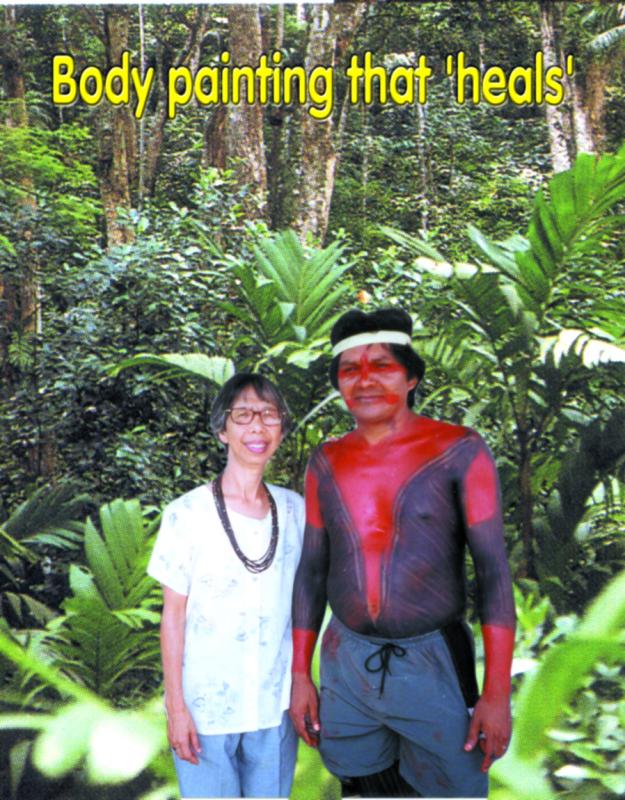
I had the privilege of participating in the Feast of the Tingijada whereby three different villages come together to celebrate the yearly great catch of fish, which is one of the main foods of the villagers. In their ritual, the women would paint the husbands and children and then paint each other using a black dye made out of the sap squeezed out from the grated pulp of genipap, a South American fruit tree, which is then mixed with gray ashes; this can stay on for two to three weeks. The dye, they call, is commonly used by most indigenous peoples in Brazil. The wife of the chief was designated to paint me: face, arms and legs with specific designs for every part. All this painting was meant to make the fishes happy, I learned.
Rituals for blessing
At the next planting season, when the soil had been prepared, the village also celebrates the Feast of the Sapurahai to ask the blessing of the spirits. It begins with the five ancients led by Awawassai, the tribe leader, lighting their rolled palm leaves to smoke out the evil spirits. Young men and boys are painted by the women with designs imitating the skin of the leopard, snake, alligator or other animals. Now they are ready for the feast, capped by dancing in a circle imitating animals familiar to them.
Painting to protest
Living with the Aikewara, I discovered that body painting among our indigenous peoples. Aside from being an art in itself, takes on different meanings. One day, I found the young men painting themselves from head to toe with the black genipap. Around their eyes and on their temples they smeared a red mix from atsuete, a native body paint, giving them the impression of a mask. This was their ritual for preparing themselves for the confrontation with the “branches” meaning the government that had made a highway that cuts off 11 km of their reservation. In fact they succeeded in blocking ten trucks carrying the logs so as to oblige the government to negotiate with them.
Not just color but medicine
Later the wife of the local leader explained that body paintings differ in accordance with the occasion; mourning, wedding or initiation to adult life. I also discovered that paintings vary from clan to clan or tribe or gender or even age. In fact sometimes even parts of the body have their appropriate designs. It dawned on me how body painting for them is an art, a ritual as well as a language for communication. I was amazed when one mother covered her baby’s body with thegenipap dye. She told me, “Do you see the irritation all over her body? Well, this mixture will assuage the itch and make the sores disappear.” And true enough, the baby stopped crying and slept peacefully after this salve.
From body paintings to cosmetics
Now I will be coming home to the Philippines and my sister, who is in the cosmetics business in the USA, has given me loads of make-up for my pasalubong. As a missionary from Brazil, with all those delightful days of living with the villagers, seeing the way they express their harmony with nature, their spiritually and respect and care for their bodies through body painting, I cant help but think of how far this tradition has gone astray in these modern day cosmetics. For us in the urban world, it means vanity; for the tribal people it means life.
Emma Returns
By Emma Pabera
Emma Pabera, a Columban lay missionary, has lived in the male-dominated society of Pakistan from 1990-1993. Emma is now working with the Columban Lay Mission Program in the Philippines. Recently she had a chance to revisit the country and see old friends.
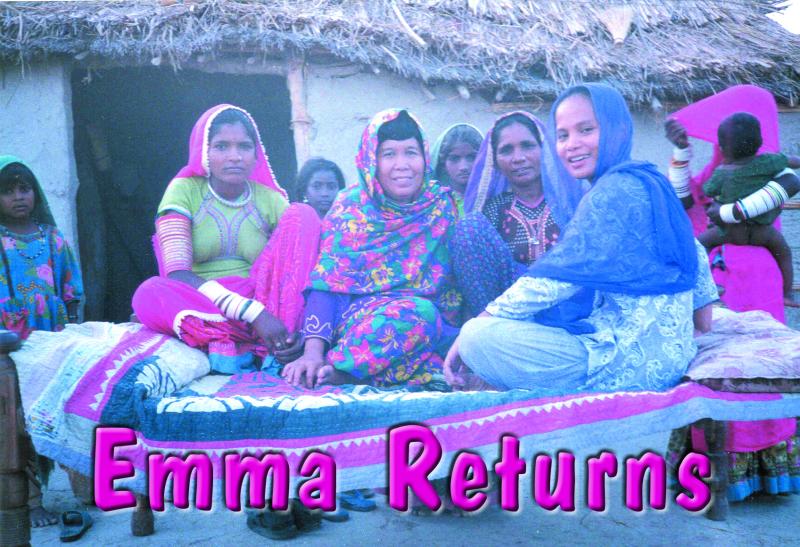
On my return visit to Pakistan, I stayed most of the time in the community in Shadbagh Parish were I was formerly assigned, I became busy going here and there visiting friends. I braved the heat of summer on a motorbike with mixed feelings as I passed along old familiar roads once again – and the old familiar joy of taking one step at a time in living with the beautiful people of Pakistan. The joy of seeing the children whom I helped prepare for their First Communion now grown up to be handsome and pretty teenagers. The joy of eating crispy and delicious paRatha (homemade thin bread cooked in a flat iron frying pan) for breakfast. The fun of sleeping on the rooftop under the starry moonlit nights. The joy of seeing elderly people still around. The joy of working with the youth who are still actively involved in the parish youth program. And most of all the chance to visit the grave of my friend Pilar. (Pilar Tilos was a Filipino missionary who died while on mission of Pakistan.)
As much as there were so many things to be joyful for there were also a lot of frustrations like not being able to speak the local language well and to see the women still suffer under the same male-dominated culture of Pakistan, women have no voice in the society. Most of the time, they are confined in the four corners of their house and their parents choose a husband for them. They are not even allowed to go out without a veil over the face. It was a pity to see my young girl friends who used to go out and play a lot now confined within the four corners of their house – cleaning, sewing, cooking. But what more could I do? I guess I just have to be grateful for the fact that somehow my being part of there lives before, witnessing and living my faith, have made a difference in them.
As a whole, my visit to Pakistan was more than just affirming. It has given me more life and energy and even renewed my desire to go on mission again, Pakistan will always be a home I carry with me in my heart, a home where I have grown up to be the kind of person I am now and every once in a while, I close my eyes and revisit it.
Exiles’ In The Land Of Chopsticks
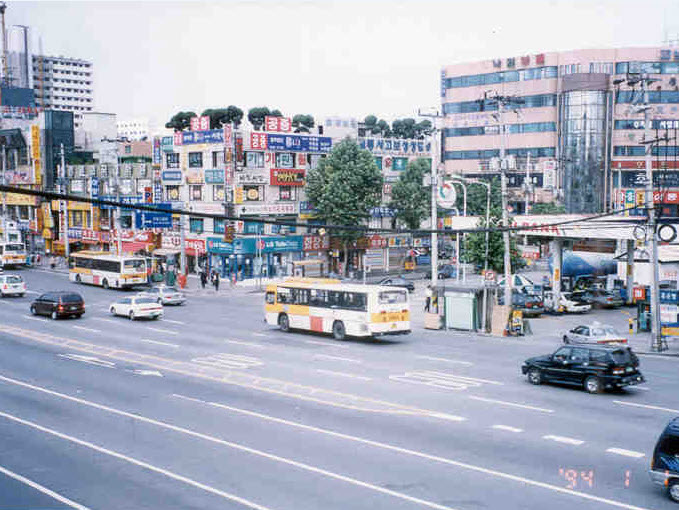
By Gee-Gee O. Torres
We asked our Assistant Editor, Gee-Gee Torres, to visit our Filipino missionaries in Korea. There she stumbled upon our Filipino migrant workers. Here she tells her story (Ed.)
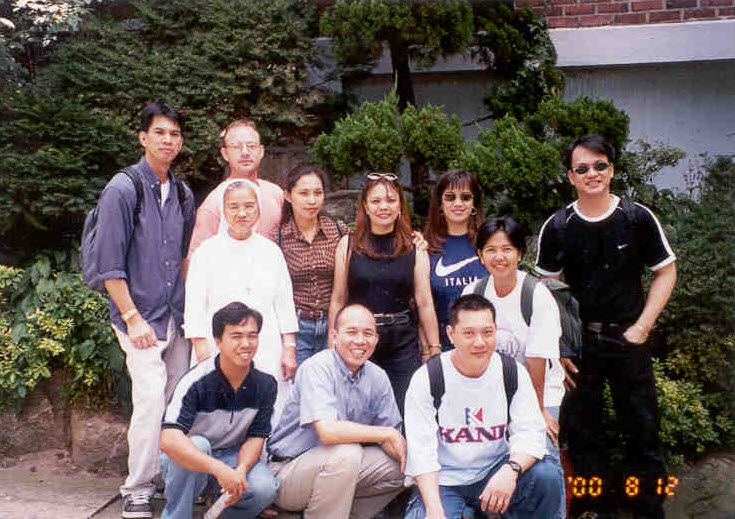
As I sat on the floor Korean style – cross legged on a cushion – at the second floor of the Filipino Center, Fr. Glenn told me about the life of our OFWs in Korea. The term OFWs is not new to me, my eldest is one of them Overseas Filipino Workers. Eight years ago she left for the United States to work as a nurse. She is now married with three children and has settled down in the U.S. she decided to stop working and stay at home. She and her husband felt that this was the best way to take care of their children. But not all of our almost three million OFWs all over the world are as blessed as my sister.
The Moonies
When Fr. Glenn mentioned the word “Moonies”, my eyes grew wide. I heard about them some five years ago. Mass weddings at Luneta hit the headlines of the newspaper in the Philippines. Thousands of Filipino women were married to Koreans whom most had not even met in person, only in photos.
The Moonies are members of the Unification Church, also called the Unification Movement, Messianic leader Rev. San-myong Moon founded this quasi-Christian church in 1954. It is archly conservative and stridently anti-communist. Other than this religious organization Rev. Moon, believed to be the new-age son of God, also heads an associated business empire with a string of companies that deal in everything from food to weapons, chemicals, restaurants, newspapers and banks. Because of the questionable recruitment techniques, financial dealings and unorthodox religious activities, the Unification Movement has a tarnished image abroad.
I learned more about the Moonies when I helped Fr. Glenn in the documentation of the cases of Filipino members of the unification Movement who went to the Center to ask for help. They were among those who were made to believer that joining the movement would man a better life – but these were all promises. When they arrived in Korea they found out that their husbands were neither factory owners nor managers, but were construction workers or farmers. Instead of living a comfortable life in Korea and helping their family in Moonies ended up as battered wives. It was hard to believe these stories until I met Sarah, not her real name.
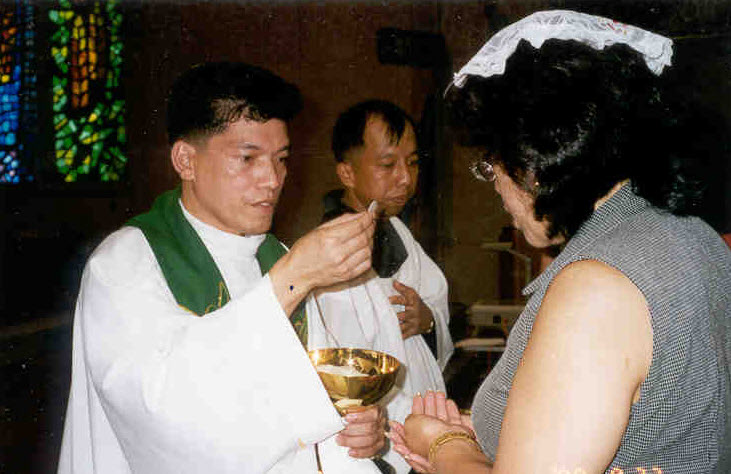
Biggest Mistake
Sarah sought refuge at the Filipino Center, it took me sometime to get Sarah to talk. She was being maltreated by her husband and members of his family. She was force to work in the farm. No consideration was give into her even if she was three months pregnant. So she escaped from her Korean husband, “Joining Unification Movement was the biggest mistake I had ever made in my life. We own a farmland back home but I was blinded by the false promises of the Unification Movement,” said Sarah. “There may be successful marriages among Moonies but many of them are being physically abused by their husbands and some are even forced to abort their babies.”
Fr. Glenn
Fr. Glenn has been in Korea for almost nine years now. He is from Butuan, Agusan del Norte and the Chaplain of the Filipino Migrant Center in Seoul. The Moonies are only one of the many problems which he faces in Korea. The problems of our OFWs range from illegal recruitment to unpaid salaries to maltreatment of factory workers trafficking of women, illegal drugs. I asked Fr. Glenn how he finds his mission with the Filipino migrant workers. “Mahirap pero masaya.” One time a Korean attacked me with a knife at the Center. His Filipino wife had run away from their home and he was looking for her at the Center. I had to run for my life. Luckily he didn’t catch up with me inside my room,” he said. Despite unforgettable experiences like this Fr. Glenn enjoys working with our OFWs. He’s happy to see them get their proper wages from factory owners. He is happy to be of help to any of our OFWs.
Filipino Center in the making
The history of the Center can be traced back to 1992 when Filipino Sister Mary Ann of the Good Shepherd Sisters invited Filipinos she met on the road to a get together at their convent. Then Filipino she invited would invite another and another and another until the convent was not big enough anymore to accommodate the group. During that time the Archdiocese of Seoul also saw the increasing number of Filipinos in Korea and the need to cater to their spiritual needs. They invited our MSP Fathers to run a Migrant Center for Filipinos which they gladly accepted because migrant workers are now of their main apostolates. In 1995 the Center was formally opened.
The Center caters not only toe spiritual needs of the Filipinos but also to their social welfare. Many volunteers help our MSP Fathers in running the Center .they religiously perform their responsibilities and obligations in the various committees which had been set-up like worship, education, Justice and Peace. Some of them would go the Center in the evening straight after work to do the weekly newsletter, hold meetings, or just to say hello.
Ding
Ding is one of our 10, 000 Filipino migrant workers in Korea whom I met at the Filipino Center. He was also a nurse, like my sister, working in one of the hospitals in the Philippines before. But because of his meager income, he was force to leave the country and try his lick as a factory worker in Korea. He looked happy and contented but when I asked him his is Korea he said, “Life here is not easy. As migrant workers our job can be summed up in 3Ds: dirty, difficult, dangerous. Our salary is lower than those of our Korean co-workers. We grab whatever works is available – garments, steel, plastic injections.”
On Sundays you will find the Catholic Church at Hyehwah Dong in Seoul packed with Filipinos – about 800 to 1, 000 people. The Mass in Tagalog and the choir sings beautifully. The Choir is composed mostly of Filipino entertainers working five star hotels. After the Mass, people rush to the Filipino restaurants across the street to eat their favorite Filipino dishes – sinigang, dinuguan, pinakbet, menudo. You can also find many Filipino products for sale outside the Church – sayote, kangkong, bagoong and he like.
You could hardly enter the Center on Sundays because it is packed with our kababayans. This I the day when most of them seine money to there families in the Philippines. If only members of their family back home realize the sacrifices they are making for them – working in factories almost 24-hours a day, without health insurance and social security, not to mention the dangers they face, I am sure they will value every cent they receive.
I admire our migrant workers for all the sacrifices they are doing not only for their families but to our country as well, not to mention the fact that they are missionaries in their own way. Along with our Filipino missionaries they too are bearers for the Good News to many people in the world.
If only members of their family back home realize the sacrifices they are making for them – working in factories almost 24-hours a day, without health insurance and social security, not to mention the dangers they face, I am sure they will value every cent they receive.
Fr. Mars, from Davao, joined Fr. Glenn last year to help in looking after our growing Filipino community in Korea as they go through the difficulties of work and life in a foreign land.
God’s Servant First
By Fr. Alo Connaughton mssc
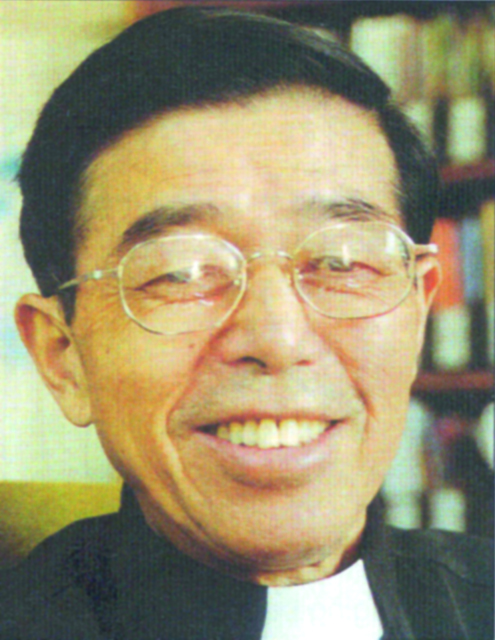
We had the privilege of welcoming “Fr. Thomas Y” to the office of the Irish Columban magazine, The Far East. Occasionally his name had cropped up in conversations of older Columbans who had worked in China. The casual observer could be forgiven for assuming that this lively, smiling 70-year-old had probably live a tranquil, uneventful life.
He was born into an old Catholic family in 1929. As a young boy in Nacheng, he had known some of the Columban missionaries and the local bishop, Patrick Cleary. He decided to study for the priesthood in Shanghai. His studies were interrupted by a 16-months jail sentenced for being a member of the Legion of Mary. On his release he continued his theological studies on his own and was ordained priest in 1957.
After Christmas in 1957 he was again arrested and jailed. Between then and 1988 his life was spent in nine different jails and labor camps. He remembers especially the Shanghai prison that housed 10, 000 inmates, the small cell where 60 prisoners had to sit in rows Buddha-like all the day long, and the , and the labor camp where he worked 16 hours a day carrying buckets of earth. All of this happened because he was a faithful priest of the Catholic Church.
With God, all would be well
Had the ever regretted his decision to become a priest? No. in good times and bad never lost the conviction that God was near and that all would be well. He often experienced this closeness of God. Much of the time his fellow prisoners and even the guards treated him well. Often too he was able to give encouragement and hope to others, especially the younger prisoners.
Reflection against insanity
How did he retain his own sanity? By revealing of the quiet times to reflect, by praying, by singing religious melodies and hymns, by reciting Latin prayers and by writing letters. In later years, when the prison regime was easier, visits from family and friends were a great support. And he was encouraged too to know that his friends were a great support. And was encouraged too to know that his friends on the other side of the world never forgot him.
Since his release during the past 10 years he taught for a time in the seminary in Shanghai but has principally dedicated himself to parish work, he has been able to reopen the parishes in his area closedown almost 50 years ago with the explosion of the Columban Fathers Luke O’ Reilly, Michael Halford and Pat Sheehy. At first only the older people became involved in parish activities but in recent years many young people have begun to participate.
Third Church
Today there is no trace of bitterness because of his past experiences. He recognize that there are difficulties to be faced in the Catholic Church in China because of what is known as the official (government recognized) Church and the underground Church. Where does he belong himself? Smiling he says, “A kind of third Church. I have friends in both groups and I try to work with all. Like all situations, it has two sides and finding a solution calls for understanding.”
He remains convinced that the prospects for the Catholic Church in China are good. One gets the impression that, at this stage of his life. It would take a lot to discourage Fr. Thomas Yu. Like Saint Thomas More his faith has been out to lest and he has paid a high price for being God’s servant first.
He Waits In Silence
By Sr. Rosalinda Gonzales mmm
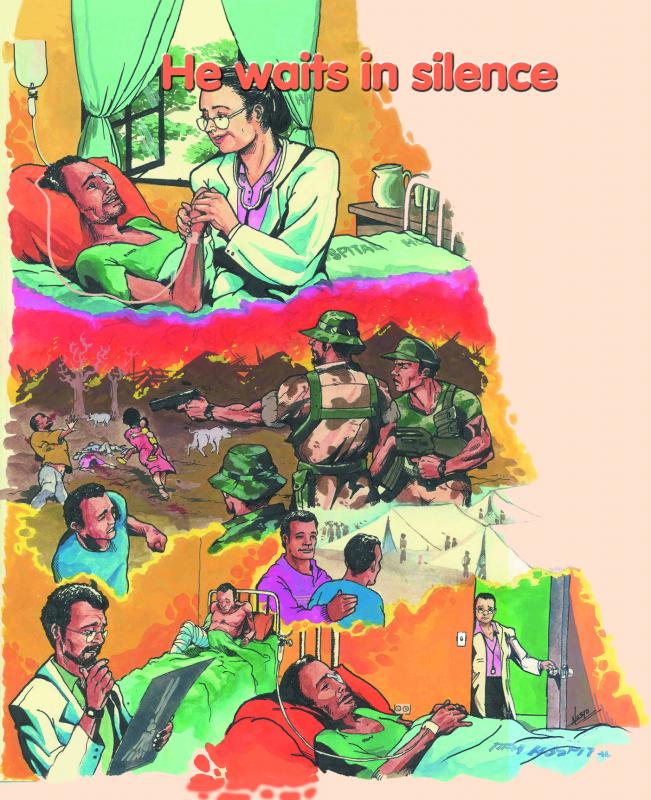
I saw him
Lying in his bed in the Lower Block at Kabanga Hospital...
Alone.
He is 24 years old
No family...
All were killed during the atrocities in Burundi.
He managed to escape
to freedom...
to Tanzania.
He was settled ‘at the Kasulu Refugee Camp
at Mtabila.
A year ago –
he was referred from the camp to Kabanga Hospital
for swollen left leg.
X-ray then showed bone cancer
He was amputated.
Now,
he has been re-admitted to Kabanga Hospital
for the cancer has spread...
It went to his left eye
which has swollen and blind.
It was enucleated.
The mass kept on growing
It was ‘debulked’ at the operating threatere
But then....
It started growing again
Nothing could be done
Except supportive treatment
I saw him
lying in his bed
...Alone.
No complaints.
No demands.
Despite constant pain.
Always grateful to the care-givers
In complete surrender to his situation.
He is ready to meet his Creator.
But until then
He waits
...in silence.
I saw him
Lying in his bed
...Alone.
But in Christ’s peace.
It Happened On Mendiola Bridge
By Chester Lastica
My first awareness of religion was when my grandmother brought me, together with my cousins, to hear Mass. We were already late and it was a very disappointing experience to watch people be driven away from the pew where the name of our family was deeply engraved so as to accommodate us comfortably in a jam-packed church. It so happened that one of those driven away from that pew was my friend.
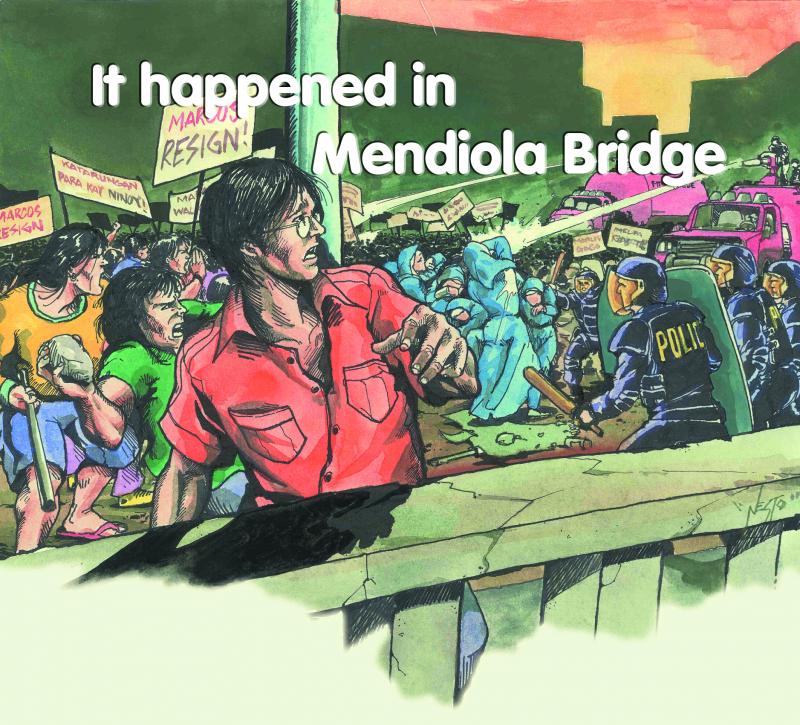
From then on many questions cropped up in my mind, starting from the Latin prayers I didn’t understand to be the sermons I though were uncalled for. Why I w as a Catholic in the first place? We had already given our contribution, so why should the priest still go on scolding? These and other questions pilled up in my mind and I never asked anybody for answers.
As I grew up these unanswered questions became stones to throw against the faith to which I belonged. In the end I concluded: “Today there are no early Christians, therefore this faith is dead.”
Church Wedding
At the age of 26, I got married. Quarrels started when my wife ask me to get married in church. For seven years she asked the same nagging question and I finally ran out of excuses. So I told her to find another man who would go along with her intentions. But then a few months later I decided to give in to her plans. We got married in the church with my two children as our ring bearers and a very much younger couple as our proxy godparents. But still, I continued to practice the freedom I believed in. I brought my family to church every Sunday and fetched them after Mass.
Rallies vs Martial Law
War was still raging in my head and the protest against the martial rule was gaining ground. After office hours I would join protest rallies, most of them bone-cracking ones, confrontational and very angry. Later I joined a group in the municipality were I live and we orchestrated our delegation to bigger rallies in Manila. One day my wife told me that the parish priest wanted to meet me. When she introduced me to him, this was what he told me: “Your wife always comes to Mass together with the children. She looks more like a widow. Why can’t you come along with your family?” This was like a slap on my face that made me silent. Upon reaching home I ordered them not to attend Mass at the church any longer. Thus my life was divided between rallies and work, but being a Christian father was not a part of it.
Statue of Fatima
One day my wife informed me about the visiting international statue of Fatima. I remembered that image from the time I was a first year student at Fatima High School in Isabela, Basilan City. Now, attracted to that statue in the parish like a magnet, I sat in the font pew and stared right into her eyes. Like a miracle, I felt the motherly love of Mary.
That day I had to be in a rally, but before going I visited her in the church and before I knew it I was praying the rosary with my fingers. I knew that the rally would be very confrontational, and perhaps that was why I was praying. I kept white silhouette of her image in my mind as we proceeded to Mendiola Bridge for a vigil. During the early morning mass, just after consecration, the military attacked the crowd with there water canons, followed by a rushing flank of soldiers with their truncheons and guns. I was up front and saw the agonized nuns being beaten, there wimples flying up in the air. Some were thrown a distance after being hit directly by the water canon. Because of a traffic light post, I was spared and I only experienced broken ribs and swollen eyes, inflicted by those water canons. It then looked as if everyone had been washed away and the only remaining target nearest the soldiers was myself, behind that traffic light post. As they ran out of water a company of young marines came and passed me as if I was not there. I was then praying the rosary and thinking of the silhouette of the Virgin of Fatima.
Motherly protection
Back home, I immediately went to the church to thank our Mother for her protection. I was so happy when the new parish priest embraced me and said that they had offered the morning Mass for us. There were many more rallies to attend after that. I eventually found myself active in parish work. In this new environment and with my involvement in the BCC (Basic Christian Communities) life seemed different, but I did not yet know the joy of living the Word of God. I was living Christianity only in the parish or when performing some assignments. I still had this desire for the early Christian way of life that I could not discover in the petty quarrels among church workers. I hungered for what they call total human development through our faith in the church.
Invited to Focolare
Then one day the parish priest introduced us to this life of unity inviting us to a Focolare gathering. At first I was skeptical about its origins, thinking here was another kind of Italian indoctrination, similar to what the Spaniards used to conquer our country to Christianity. But I had second thoughts; they didn’t come with the sword or guns to convince us. Besides there were other Asians, Europeans and other races represented in this community. These people were all smiling and talking about the love of God and sharing their experiences. This was something new, for all I had heard about before was the wrath of God when we fail Him and sin was synonymous to hell. But this time was different – they were talking of their experiences which I could neither debate nor contradict.
Early Christians in modern times
They were living of the new commandments of Jesus: “Love one another as I have loved you.” On my part, I could only recall the Ten Commandments and not even in their right order. After listening to personal life experiences of loving God by seeing Jesus in every neighbor, I was also challenged to start with little acts of love, like arranging the seats, picking up the garbage and putting it in the bins, helping in the food distribution or cleaning the hall, sharing my food when rations were small and listening to others or to talks on stage, even though I felt sometimes drowsy in the afternoon. I felt God’s immense love for He had opened a door through which I could enter His house through the Sacrament of Penance. Those three days taught me to smile and be happy. It seems a miracle how a simple authentic smile can erase the bitterness and hatred inside oneself – a smile that expresses the love of God for me and my neighbor. In my heart, his was what I had always been looking for the reality of the early Christian community lived in modern times.
Locally we formed groups in our community that meet to share how we live Jesus’s Word. My family too is embracing this way of life, which has brought us much closer to one another because of God who is love, now very much present in our family and in our community.
Laj Rolando
By Fr. Edralin Daquipil cicm
Edralin Daquipil, cicm is a native of Negros Occidental in the Philippines. He arrived in Guatemala in July of 1996 for his three years of missionary internship. When he wrote this article he was living among the Maya Q’eqchi Indians, accompanying them in their work, harvesting cardamom and corn, listening to their stories and participating in their religious traditions. He was ordained a deacon in 1999 at the church of San Marcos the Evangelist in Tierra Nueva, Guatemala City. And last year he was ordained to priesthood in the Philippines at Sto. Rosario Church in Fabrica, Sagay, Negros Occidental.
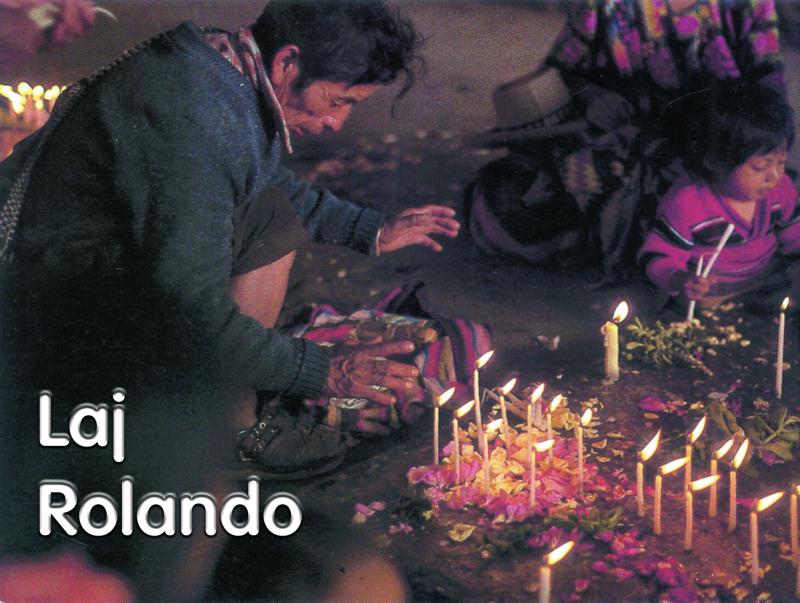
I had finally reached Sawachil, the last community I was supposed to visit in order to complete my more than one year of immersion in the remote villages of Coban Alta, Verapaz in Guatemala. I stayed for one month in this small mountain village. And it was there I met Rolando.
My little friend
Rolando was sleeping soundly. When I first saw him upon entering the house, he was only half covered with the traditional Maya Q’eqchi cloth. He was ten months old, the youngest child of Don Pedro. Even though he could not speak yet, we became good friends. He used to crawl around the floor while I visited and he would just beam, “hah-hah! hahhah!”
For almost a week I did not see Rolando. I had been in the cornfield most of the time, helping the community. Then one day I decided to go and pay him a visit. When I saw him I thought he looked very weak. His family was with him. They were reciting a special spontaneous prayer for his recovery. They offered four lighted candles and blessed him with incense of opal. The conversation with his parents and brothers and sister led to stories about health and sickness experiences. I told them about an appendectomy I had and I showed them the thin scar on my belly. The way they inspected it demonstrated looks of amazement and wonder.
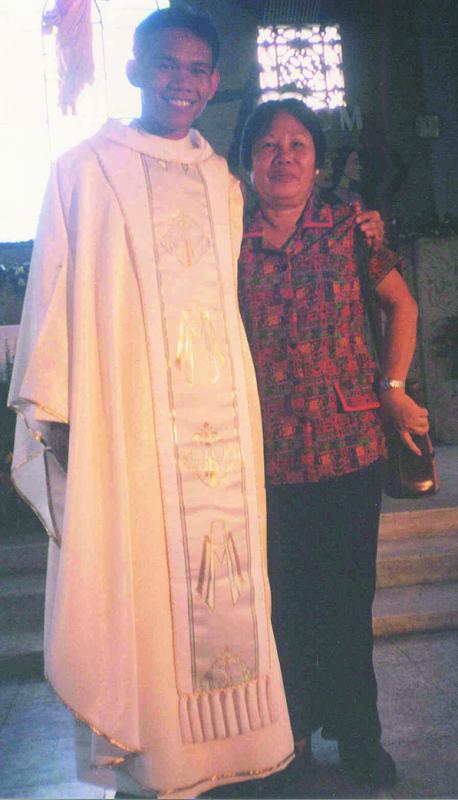
Spiritual chants or medicine?
A few days later it appeared that Rolando was not getting any better. He looked very weak and strange. It was obvious that he needed medical attention. It occurred to me that it would be wise to bring him to the government hospital in the city of Coban, where he could receive proper (and free) medical care. I told the parents that unless Rolando was transported to Coban he would probably die. I felt sure of this. This was where I came in conflict with a Mayan Q’eqchi Indian way of looking at things. For them, the village was the only place for Rolando. Rolando’s parents were not enthused about my suggestion. The elders of the community opposed the idea of taking him out of the village as well. There I stood, speechless. But not for long. Thank God their concern for Rolando’s life was stronger than their attachment to their customs.
Eight-hour-walk under the sun
The next day Rolando’s parents and his older brothers and I started walking across the mountains and hills to bring Rolando to the hospital. We walked for eight hours under the heat of the sun and traveled two hours on a chicken bus. We arrived at the hospital around five in the afternoon. Rolando was immediately taken to the emergency room. He was suffering from acute pneumonia.
Scared to death
All this was difficult for that family. Doña Luisa, Rolando’s mother, went inside the emergency room. Don Pedro and his eldest son, Francisco, were told to stay outside, near the entrance. Everything looked strange for them. They were totally unfamiliar with any hospital. There was so much going on there. Don Pedro admitted, “Never in my life have I experienced being in a hospital. Right now I am scared to death.”
Young life saved
Rolando stayed in the hospital for eight days. Then he got better and was allowed to go home. We were all delighted. Our efforts to save a young life had been successful. We returned to our humble village of Sawachil in good spirits, and the community welcomed us back. No arguments on modern medicines or laws of the spirits. After all, Rolando was saved.
They where reciting a special spontaneous prayer for his recovery. They offered four lighted candles and blessed him with incense of opal.
To Leave Home Forever?
By Sr. Mary Reparatrix SSpSAP
Some 50 years ago, a young Filipina decided to join a contemplative order of nuns. Half a century later she is in Brazil and she looks back and remembers that first journey to the monastery with its wrenching decision.
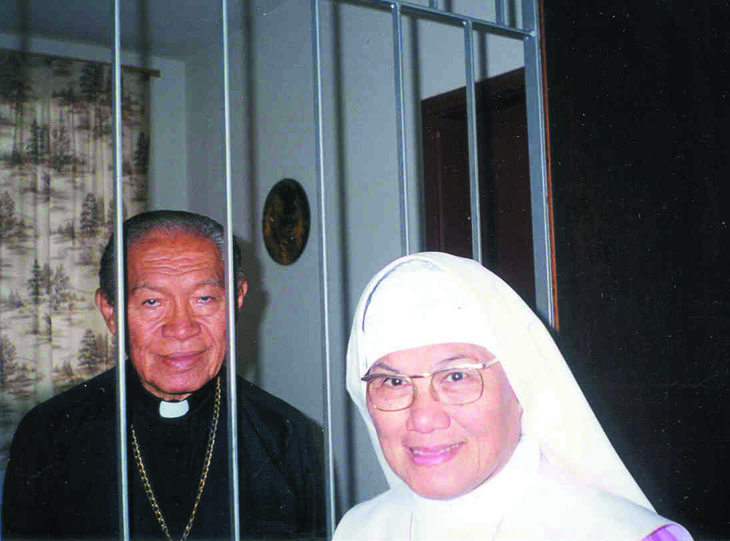
During the Japanese occupation in the Philippines in 1945-46 (World War II), I found myself with my family in an evacuation cottage in Bohol, 14 Kilometers from home. My brother, Fr. Felix S. Zafra, who was then assistant parish priest and chaplain to the Belgian Sisters at St. Catherine’s School, Carcar, Cebu, wrote my parents asking them to send me to Carcar to resume my studies and to be an intern with the Belgian Sisters. So I did. I was then 16 years old and in first year high school. There were around 30 interns with me in the dormitory, young girls from all over our province of Bohol. It did not take a long time until I felt at home with the nuns and my fellow boarders.
My priest brother
Besides being the chaplain and our confessor, my brother gave us religious instruction during the first period of our class. I remember how he humiliated me when I was not attentive to his explanation about the Blessed Trinity. While he was demonstrating this with a piece of paper folded into three to make us understand they mystery of God in three Divine Persons, he saw me talking to the girls at the back row. He then asked me if I understood what he just said. Embarrassed, I stood up and stammered to repeat his explanation.
Once a week a couple, friends of my brother, would take me out for a “paseo” around the city of Carcar or to see a cine show. I guess he was trying to find out what my inclinations were. But I was not so at ease with the noise outside, nor was I interested in going to any movie. I always opted to go back as soon as possible to the Convent. At school, the girls, especially the externs, were fond of passing around their autograph books. I recall what I wrote each time I read the question: “What is your plan for the future?” I always wrote, “To be a nun...”
When my brother got his new appointment as coadjutor to the parish priest in a town back in our province, he transferred me to be an intern at St. Josephs Academy in Tagbilaran – this time with the Servants of the Holy Spirit Sister (SSpS), where I started as a sophomore. My elder sister, who was already in college, was also an intern in the same academy.
Pink Habit
I was found of the Sisters. As a junior student my teacher in English Literature, Sister Humilis, SSpS, often invited me on Saturdays to help her correct the test papers of the junior students. One day she told me about another branch that Fr. Arnold had founded: a contemplative congregation whose main apostolate was perpetual Adoration of the Blessed Sacrament, and that the nuns wore pink instead of blue habits. That was the spark which kindled in my heart, the desire to adore the Lord in His Eucharistic Throne all the days of my life.
Admitted to Baguio
I then confided to Sr. Humilis my desire and I asked her to tell me more about the life of the Sisters. I thought to myself that I have to make a try if I can afford to leave home forever. My mother gave me permission to spend my Christmas vacation with the Sisters, but she requested me to at least prepare a crib and a Christmas tree at home for the last time. Meanwhile my application papers were already in Baguio. I had mentioned in one of my letters that I was decided to enter soon after my graduation, unless the superior would advise me to study further. Sister Superior M. Ludgera’s quick response was: “Come...” And I did.
As I look back half century later and from half a world away here in Brazil, I thank God for that decision.
To Search is to Find

 For some time we have been asked to put in Misyon a section on Questions which our readers would like raised. We are not too sure how appropriate or suitable this is so please let us know if these questions have been of any help to you. We are calling this article To Search is to Find because we do not have the answers to every question – but the very asking of the question is the beginning of the answer.
For some time we have been asked to put in Misyon a section on Questions which our readers would like raised. We are not too sure how appropriate or suitable this is so please let us know if these questions have been of any help to you. We are calling this article To Search is to Find because we do not have the answers to every question – but the very asking of the question is the beginning of the answer.
Corruption: No Hope?
Recent events in the Philippines have revealed great corruption on all sides. Is there any hope for change? What can Christians do?
Answer: We must never lose hope. Other countries have been through similar crises of corruption and have now reduced it o manageable levels. As Christians we must:
a. Protest clearly, loudly and continually.
b. Vote for people with a clean record and not continue the old system of voting for our friends, relatives and kababayans.
c. We must join organizations set up to stop corruption like Namfrel or Graftwatch.
d. We must remove petty corruption in our own private lives and businesses.
Uncooperative Priest
I am in the Couples for Christ. Every now and again we prepare many unmarried couples for the Sacrament of Marriage. But our priest always makes it very difficult for us. We are only trying to help these couples to get back in touch with Christ. Why can’t the priest be more cooperative?
Answer: Some priests complain that a couple of days before the proposed date zealous members of the Couples for Christ bring in people to be married without any preparation. With the result, they have done no seminar; some of them are not even baptized and the papers are not properly prepared. Sometimes they even asked to have the marriage performed without the papers being properly completed which actually puts the priest in jeopardy of the law. The work of Couples for Christ is really praise worthy. They have done arduous work all over the Philippines in promoting the sacredness of marriage. But it is the priest’s obligation to make sure that we don’t cut any corners and that marriage is not devalued by rushing it up without the proper preparation.
Bishops Favoring Muslims
It seems to me that the Catholic Church is taking the side of the Muslims against its own members. Many statements of our local bishop’s in general seem to favor the Muslims and they seem to forget that we, the Christians, have gone through untold suffering and if any of our people are killed there is no way we can get justice locally, it seems unfair. Are the bishops playing politics?
Answer: At the turn of the century the Muslims and Lumads were 80% of the population of Mindanao. Now they are 20% and the Christians are 80%. The Muslims feel embattled and desperate and the bishops realize this. The Philippine Army in Mindanao are mainly Christians and they are known to abuse the people. They Holy Father has asked in the Philippines to be the voice of the voiceless and the bishops are fulfilling this. But they are also aware of the suffering of some Christians and they bring this up at the many dialogues they engage in with Muslim religious leaders.
Where is my Misyon?
I sent in a subscription to Misyon magazine and have not received any copy for the last six months.
Answer: Thank you for telling us. If you don’t tell us we won’t know. There are serious problems with the post here in the Philippines. We post Misyon magazine in Manila two months beforehand, but still it arrives late. That is the problem with magazine post or printed matter. Reluctantly we have found it much more advisable to distribute the magazine through a promoter. Do see a Columban superior in your area or the promoter and try and get it through them. And please send us a message telling us what issues you have not received and we will send them by special delivery. It greatly distresses us when we hear stories like this so please do inform us immediately.
Justified Anger
Baptized, confirmed and married without instruction
A friend of mine working in Japan brought home her prospective husband to the Philippines. The priest baptized and confirmed the man and then performed the marriage – without any instruction. When they got back to Japan the local priest was very angry – what have you got to say about this?
Answer: I think the priest in Japan was justified in being angry. He would have preferred proper instruction rather than a rush-up job. The Sacraments are more fruitful when given with proper preparation. It is quite possible that that man will go back to Japan and never practice as a Christian.
Whereas if he had taken his time about it and gradually learnt about the Catholic Church’s teachings, there is a good chance he would become a mature Christians for life. The longest way around is the shortest way home.
Influence of Foreign Movies
In Filipino movies, a happy movie frequently ends at the marriage in Church. In foreign movies, it ends either with a divorce or with them living happily together – frequently without the benefit of marriage. Is this the way the Philippines is going?
Answer: Who knows? Movies have a great influence on everything we do and since people read very few books, the movies have an even bigger influence on them. What is certain is that there is no escape from proper religious education for all our people and praise must be given to those organizations who do this. I am thinking of the Christian Family Movement, the Couples for Christ, the Legion of Mary and other groups. So basically the future is in our hands and our willingness to evangelize the 21st century.
Where Their Souls Once Wept
By Memen Lauzon
Recently, Memen Lauzon made a return visit to East Timor. Memen Lauzon works for international Dialogue, a non government organization based in the Philippines which helps to build solidarity in places like East Timor. She shares with us her return journey to East Timor and her great appreciation of the work of Filipino Missionaries there. Se mentioned many of these missionaries but for editorial reason I have been forced to cut them down. But I can assure you her respect for each and every one of them is unbounded. (Ed).
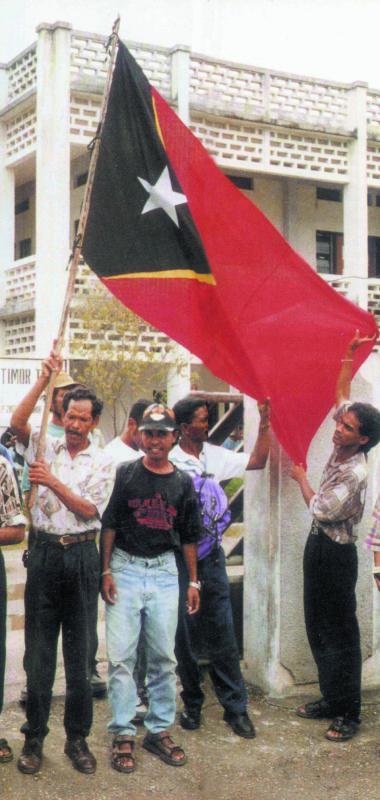
On my return visit to East Timor I made sure to visit the Dominican Sisters, the Salesian, the Maryknoll Sisters in Aileu, the Canossians, the St. Paul Sisters and the Claretian priests in Suai. I was particularly struck by my sojourn to Suai, my first time ever in two years of work in East Timor. Suai is one of the most perilous areas on the border separating East and West Timor we had a medical team for the place at the time of the referendum but he conditions prevented our Filipino doctors from reaching the area. I myself failed to get there at that time. Suai turned out to be the site of the scariest massacre in East Timor. Three Catholic priests were murdered by pro-Indonesian paramilitary. One of them was a newly ordained Jesuit who had spent his theology studies in the Philippines. About 300 inhabitants were hacked to death and burned on church grounds. I came to see the exact spot where the horrible brutality was perpetrated.
Where their souls once wept
The Memorial Day in Suai was highlighted by a Requiem Mass and a vigil beginning on the eve of the Massacre’s anniversary to recall the memory of the victims, to gray for them and to mourn with their bereaved families. There was also a re-enactment of the event. There eve of the anniversary came to be both gloomy and dramatic. Wailing women and children gathered in the churchyard with lighted candles and floral wreaths all over the place. I felt some goose bumps all over as I walked through the exact site of the bloodbath and thought of the corpses scattered there and the Timorese priests who came to be martyrs. I could almost sense there cry for justice.
I will rebuild my Church...
Amidst the turmoil, a lot of healing and rebuilding has to be done. The Filipino Claretian Missionaries and the Saint Paul Sisters in Suai have been doing a good job along this line. For instance, the outgoing parish priest Fr. Rene Manubag, CMF has managed wit modest means to reconstruct the burnt church and the adjacent convent and put up with the locals a beautiful indigenous multi-purpose community center.
Fr. Rene has been aggressive himself in organizing parish activities and workshops towards communal healing. When I talked to small children while we were walking down a street to go to church, I introduced myself as a Filipino and to my surprise they happily expressed in chorus a familiar chant we use in the Philippines as “ice-breaker” during seminars. I learned that it was Fr. Rene who taught them. In glee, I joined them in reciting the chant as we walk back to church.
The best out of worst times
I was glad to see and meet other religious Filipino missionaries for the occasion, the Claretians - Fathers Ric and Cyrus and seminarians Brothers Edwin and Rey, the Jesuit Brother Joey and the Divine Word missionary Fr. Efren, the St. Paul Sisters community, Sisters Carmen, Constance,, Annette and Vicky who welcomed me in their house, Sr. Violeta, a Filipino Canossian Sister, who had many interesting stories to tell and till a number of others whose names I failed to take note. It was indeed a memorial day for all, a fitting day to recollect the ill-tidings of the past and the joy for the best that was brought out of people in the worst of times. I was jubilant to have the acquaintance of all and thanked God that these people made it through. They stuck it out in East Timor amidst the poverty and destruction.
Hats off to Filipino missionaries
In recent days, reports of renewed paramilitary violence broke out in West Timor where East Timorese refugees are still held up. Three UN aid workers were killed precipitating again heightened feelings of insecurity especially along the border notwithstanding the presence of UN peacekeeping forces. I am confident that the Filipino Missionaries won’t be cowed. They will endure to stay on with the people they have chosen to serve just as they did in 1999. I bow before them for their courageous spirit. There is so much about them that is admirable and worth emulating. I am humbled by their example. I could only pray hard that they may be able to sustain their apostolic work in all wisdom and fortitude.
With national pride, I could say that one of the most beautiful things that happened to the people of East Timor is there encounter with the Filipino religious missionaries who nourished a long suffering people and imbibed them faith, hope, passion and commitment.
Will We Ever See His Like Again?
By Niall O’ Brien mssc
 On Monday, October 9, at 7:00 pm at Daytona Beach in Florida, while crossing the road, Fr. Eamonn Gill was hit by a truck and killed instantly.
On Monday, October 9, at 7:00 pm at Daytona Beach in Florida, while crossing the road, Fr. Eamonn Gill was hit by a truck and killed instantly.
Fr. Aemonn spent nearly half a century here in the island of Negros. In a few days time he had planned to come back to the Philippines. Eamonn first came here in 1950. He was appointed to the parish of Ma-ao Central. The young, dedicated, active priest was immediately loved by the people and to this day families like the Hilados, the Wrights, the Aranetas, Coscolluelas and Hagads know him and love him.
After I came to the Philippines I got to know him because he was appointed to the new mountain parish of Magballo. There were no roads up there and he had to build the house and the church. I often visited him in Magballo and his concern was for the peasants who were gradually being forced off their land because they didn’t have any written titles though they had lived on these lands since the beginning. All they could do was point to the tree they had planted twenty years previously. At one stage he actually went to Vice-President Fernando Lopez in Manila to plead their cause. And he succeeded and if I recall correctly bloodshed was avoided. This was, of course, in the days of the Federation of Free Farmers led by Gerry Montemayor. That was all new to us then. Up till then a priest’s job was mainly to get the people to go to Mass and the sacraments. Eamonn was one of the first to see that human rights was an integral part of the Church’s doctrine of Vatican II. Such was his integrity that even people who were on the other side of the land dispute became dear friends of his and remain so until the present day.
He became our superior for two terms. As such he backed us strongly on the needs and the rights of the poor. I remember one time at the meeting of the Columbans where we had decided to get more involved in human rights and the Church of the poor, I remember him standing up and saying, “Well, lads do you realize, if we do this we’ll have less for ourselves and are you willing to accept that?” We voted yes and went ahead. When some of us were in prison, he joined the long protest march walking some eighty kilometers all the way from Himamaylan to Bacolod with his people and was magnificently supportive of us all the time.
Next he was appointed to Sipalay and took the same strong stand there during very difficult times after the people Power Revolution of EDSA. Then he was sent to Himamaylan. Those were the days before General Jarque joined the NPA and in those days he was bombing them and the civilians. Tens of thousands of civilians came down from the mountains and Fr. Eamonn fed them and housed them and spent astronomical sums on medicines for them.
While he was parish priest of Himamaylan, he and his assistant Fr. Eddie Allen, then in his 80’s were vilified by the military. One town official actually organized demonstrations against them implying that his help to the refugees was closet support for the NPA. That was a load of nonsense because his defense of the peasants who were being bombed out of their homes had nothing to do with his relationship or non-relationship with the rebels in the mountains. That was the time of the De Los Santos massacre when he actually went to Manila and personally presented to Cory Aquino his own devastating photos and a full report of what had happened. It was about that massacre that the well-known book Dead Season, by Alan Berlow was written and many good things are said about Eamonn Gill in that book.
His last appointment was to Henrietta Village. And there he earned the love of the people for his generosity, his humor, his faithfulness to his job as a priest and his diplomatic skills in solving the huge squatter problem between a group of parishioners and Gaisano. That was one squatter problem in Bacolod which was not solved by bulldozers. Without him it would not have been solved the way it was. It was one of his last acts. He never indulged in public polemics or grandstanding. He quietly got the job done.
Eamonn hadn’t a mean bone in his body and I never saw him do a mean act. For that, I sort of envied him because his generosity just came naturally to him. His sermons on justice were clear, courageous and humorous. Some wealthy people knew him and loved him and came to his little church in Henrietta while their wives might have gone to more fashionable places and they knew they were possibly going to hear something which they didn't want to hear but they also knew it would be fair-minded bitterness and with humor.
Eamonn was the youngest of a family of 12. Much loved by his sister and brothers and nieces and nephews who urged him to come home and to be with them when he retired. In the last couple of years he spent a lot of time at the bedside of his sick relatives. I know that many people who will read this article will be filled with sadness at the loss of such a rare human being. He was my lifelong friend and I valued his friendship because I knew I was with someone better than myself. He was my ideal Christian. In a few days time he planned to come back to the Philippines and I had a room prepared for him here and a car and driver ready.
Negros was blessed to have him for those years and blessed too in one particular extraordinary trait of his – his ability to be your friend and yet to disagree with you. He had a favorite phrase which used to exasperate me no end. It was “On the other hand ...” We both participated in committee meetings and frequently when an opinion would be given, Eamonn’s voice would be heard, “On the other hand..." When he was talking to a wealthy friend who complained about the fact that the laborers were lazy or whatever, Eamonn would say, “But on the other hand..." and when he spoke to high up members of the NPA whom he knew and remained friends with, they would be describing some terrible atrocities Eamonn would agree but you could be sure he’d say, “On the other hand...”and try and give the other point of view. That is a rare thing in our culture here where friends tells you only what you want to hear. Not so Eamonn and he would do it without being offensive or hurtful. Something for us all to learn from. Just the other night at dinner with a friend in Manila, she asked me how are things in Negros and why were there still insurgency, I wished Eamonn was there to give her a franker answer than I was prepared to give and to use his old phrase, “On the other hand...”
The words of his pastor in Florida express how we all feel at this moment. He said, “He was so kind and funny and warm and caring that there aren’t enough words to describe how I feel about Eamonn.”
Will we ever see his like again?